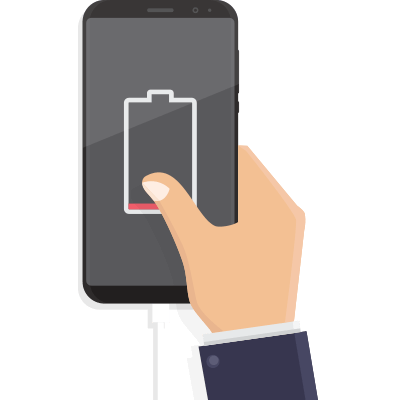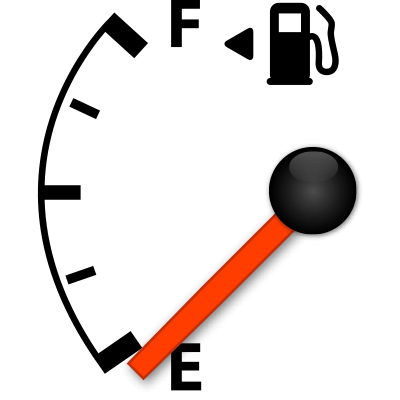STEP TWO: EDUCATE all teams that symptoms tell the story of the recovery of the concussion; symptoms are more intense in the beginning and get better over time.
After a concussion, the brain cells are temporarily inefficient. A helpful way for students, parents and teachers to think of a concussion is as an “energy crisis” not as something scary like a bruise or a bleed. Here are two energy management scripts to use with your children/students:

You are like a smart phone that is 3 upgrades behind or with a very “spotty” battery. You are not broken, you’re just not holding a charge well.

You are like a car with a small gas tank. You can get out of the garage (go to school, socialize with friends) but you need to ‘do, then fuel.’ The symptoms function like an indicator light on the car’s dashboard. When they ‘flare’, they are simply a signal of how well you have been managing your energy levels.
Symptoms are the barometer of the concussion. Symptoms may be present for up to 4 weeks (hopefully decreasing daily/weekly). It is our duty to teach our children how to “pace their energy so they can control their symptoms” – that is the best way for our kids to stay engaged in school and life while still recovering from a concussion. Learning to manage symptoms is an active approach to rehabilitation! Doing cognitive and home activities in smaller amounts, followed by "pacing" breaks (5 to 10 minutes)… “do, then fuel/charge”… is how the school and home plan can be rehabilitative and not restrictive. It is unreasonable to ask a teen to never text or watch TV over 4 weeks. It is unreasonable to ask a teacher to never ask a student to read, look at a computer or complete some in-class schoolwork or homework over 4 weeks. If we want our children/students to be engaged in their own recovery, we have to keep them reasonably engaged – socially, academically and at home – while we are waiting for the concussion to heal.
Physical
How a Person Feels Physically
- Headache/Pressure
- Blurred vision
- Dizziness
- Poor balance
- Ringing in ears
- Seeing "stars"
- Vacant stare/Glassy eyed
- Nausea
- Vomiting
- Numbness/Tingling
- Sensitivity to light
- Sensitivity to noise
- Disorientation
- Neck Pain
Cognitive
How a Person Thinks
- Feel in a "fog"
- Feel "slowed down"
- Difficulty remembering
- Difficulty concentrating/easily distracted
- Slowed speech
- Easily confused
Emotional
How a Person Feels Emotionally
- Inappropriate emotions
- Personality change
- Nervousness/Anxiety
- Feeling more "emotional"
- Irritability
- Sadness
- Lack of motivation
Sleep/Energy
How a Person Experiences Their Energy Level and/or Sleep Patterns
- Fatigue
- Excess sleep
- Trouble falling asleep
- Drowsiness
- Sleeping less than usual
Medical Note from Mark Halstead, MD
“It is important to emphasize with students that making the brain work will not make the brain injury worse. Symptoms may worsen, but that is the way our body gives feedback that it is reaching a limit for what we are doing at that time, not a sign of a worsening injury. Pacing with academic and physical activity and responding to symptom flares by reducing activity and/or taking a break is the current best practice for concussions.”
– Mark Halstead, MD (Director, Sports Concussion Clinic – St Louis Children’s Hospital)
IMPORTANT
All symptoms of concussion are important; however, monitoring of physical symptoms, within the first 48 to 72 hours is critical! If physical symptoms worsen, especially headache, confusion, disorientation, vomiting, difficulty awakening, it may be a sign that a more serious medical condition is developing in the brain.
SEEK IMMEDIATE MEDICAL ATTENTION!